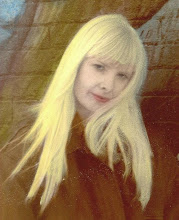BURMA SHAVE
Burma-Shave sign series appeared from 1925 to 1963 in most of the contiguous United States. The exceptions were New Mexico, Arizona, and Nevada (deemed to have insufficient road traffic), and Massachusetts (eliminated due to that state's high land rentals and roadside foliage). Typically, six consecutive small billboards would be posted along the edge of highways, spaced so they could be read consecutively by motorists driving by. The last sign was almost always the name of the product. The signs themselves were originally produced in two color combinations: red-and-white and orange-and-black, though the latter combination was dropped after only a few years. A special white-on-blue set of signs was developed for South Dakota, which restricted the color red on roadside signs to official warning notices.

This use of the billboard was a highly successful advertising gimmick during the early years of the automobile, drawing attention and passers-by who were curious to discover the punchline. However, as the Interstate system expanded in the late 1950s and average vehicle speeds increased, it became increasingly difficult to attract motorists' attention with relatively small signs, especially near major cities with their burgeoning arterial interchanges.
Some of the signs, instead of directly advertising what the shaving cream could do, would feature public safety messages (usually about speeding).
Examples of Burma-Shave advertisements can be seen at The House on the Rock in Spring Green, Wisconsin. Re-creations of the famous Burma-Shave sign sets also appear on Arizona Highway 66, part of the original U.S. Route 66, between Seligman and Kingman, Arizona (though they had never been installed there by Burma-Shave itself during its original sign campaigns).
Movies and television shows set in the 1950s (either "period pieces" or time-travel plots) have used the Burma-Shave roadside billboards to help set the scene. Examples are Bonnie and Clyde, The World's Fastest Indian, Stand By Me, and the pilot episode ("Genesis") of Quantum Leap. The long-running series Hee Haw borrowed the style for program bumpers, transitioning from one show segment to the next or to commercials.
By having the rhymes build suspense until the fifth sign, Burma Shave forced those reading the signs to focus their attention on reading the full series of signs so that the message could be understood and savored like a good joke.
Examples:
THE BEARDED LADY
TRIED A JAR
SHE’S NOW A FAMOUS
MOVIE STAR
BURMA SHAVE
IF YOU THINK
SHE LIKES YOUR BRISTLES
WALK BARE-FOOTED
THROUGH SOME THISTLES
BURMA SHAVE
SHE EYED HIS BEARD
AND SAID NO DICE
THE WEDDING’S OFF
I’LL COOK THE RICE
BURMA SHAVE
A CHIN WHERE BARBED
WIRE BRISTLES STAND
IS BOUND TO BE
A NO MA’AMS LAND
BURMA SHAVE
USE THIS CREAM
A DAY OR TWO
THEN DON’T CALL HER —
SHE’LL CALL YOU
BURMA SHAVE
A CHRISTMAS HUG
A BIRTHDAY KISS
AWAITS THE WOMAN
WHO GIVES THIS
BURMA SHAVE
SUBSTITUTES
ARE LIKE A GIRDLE
THEY FIND SOME JOBS
THEY JUST CAN’T HURDLE
BURMA SHAVE



No comments:
Post a Comment